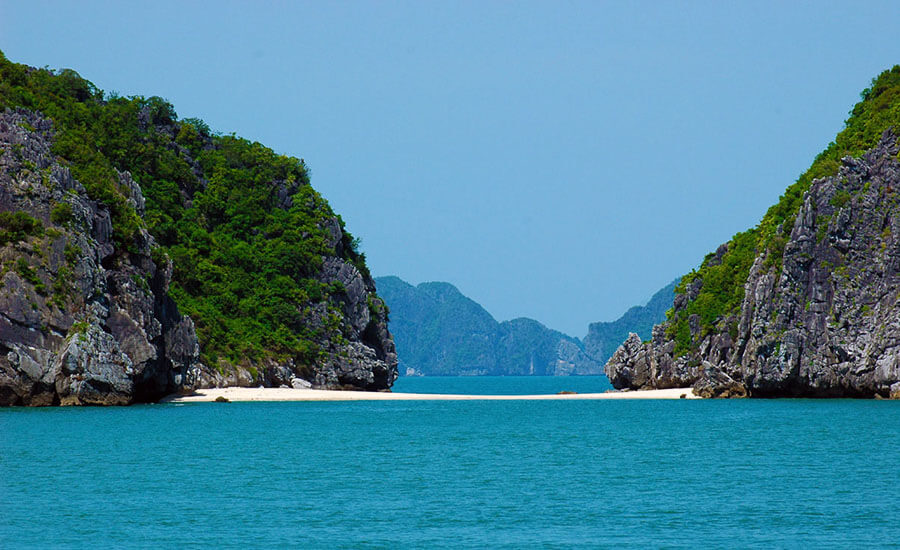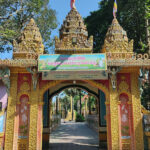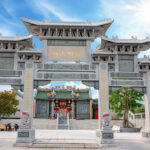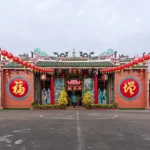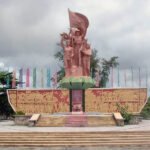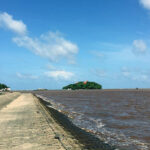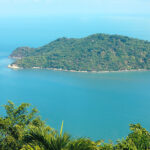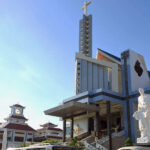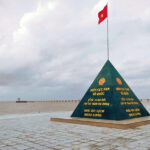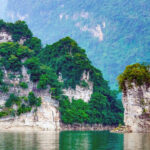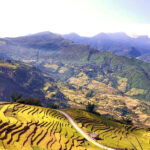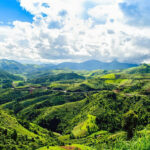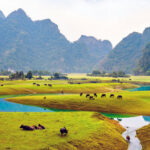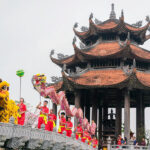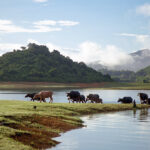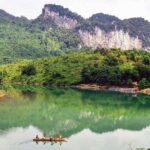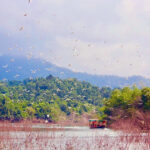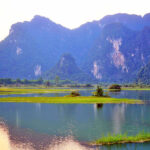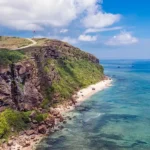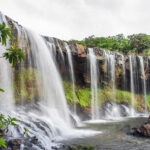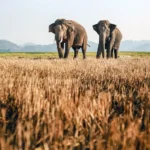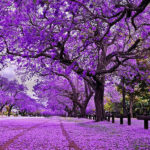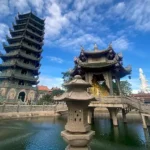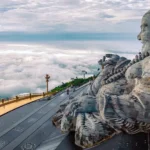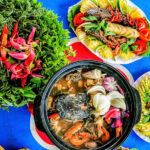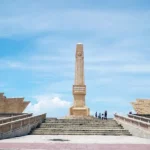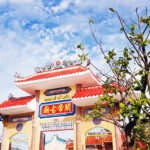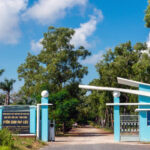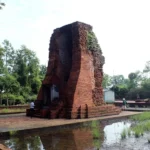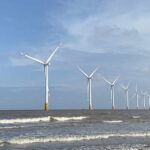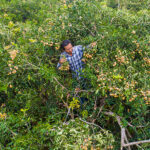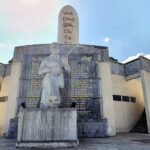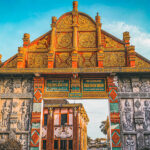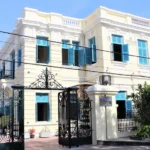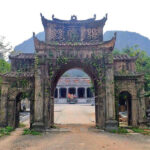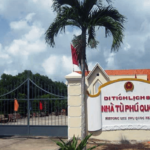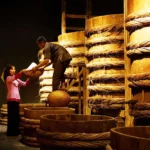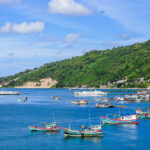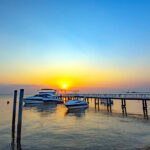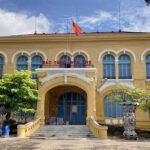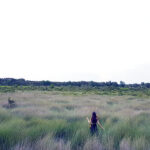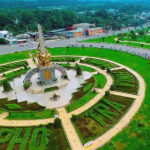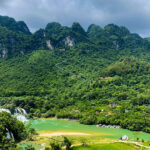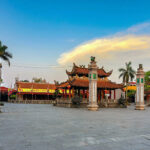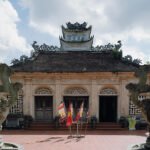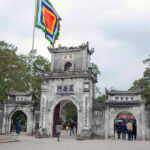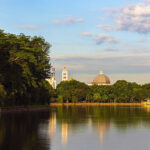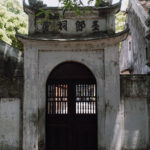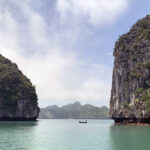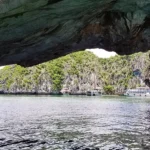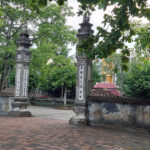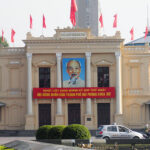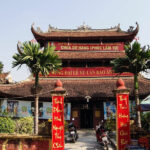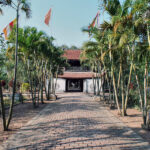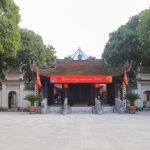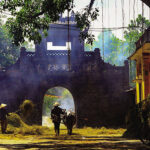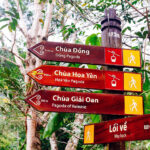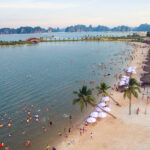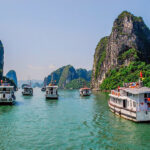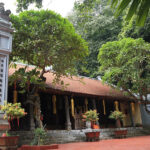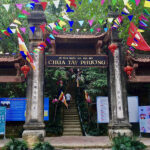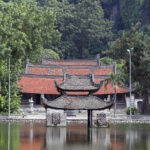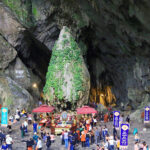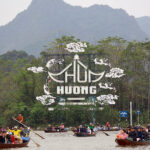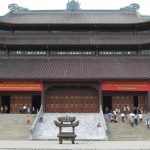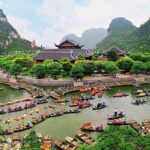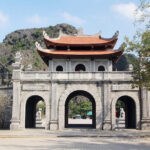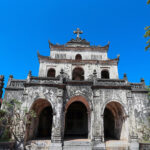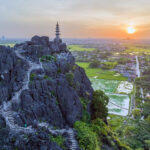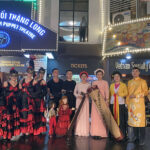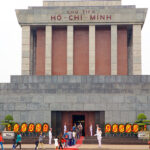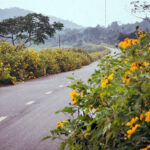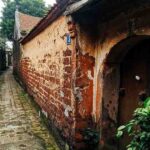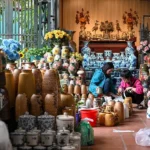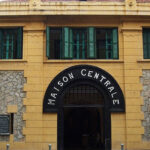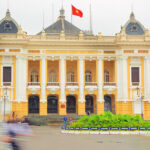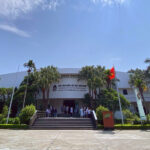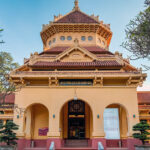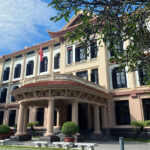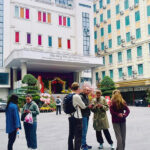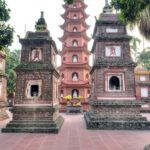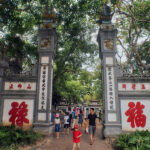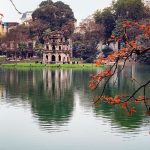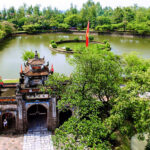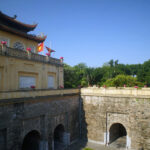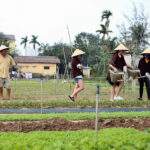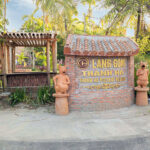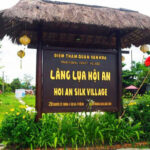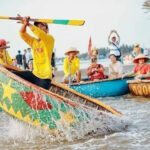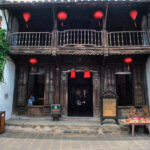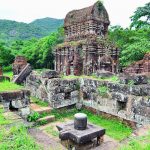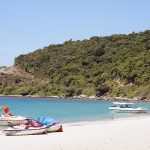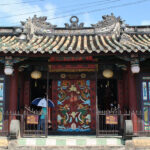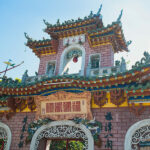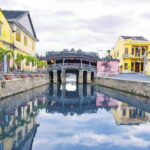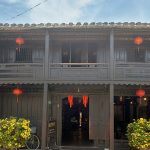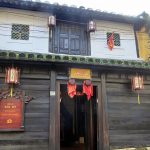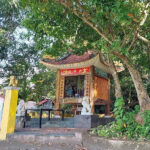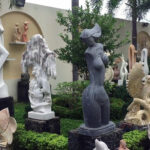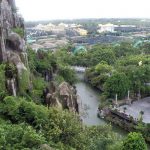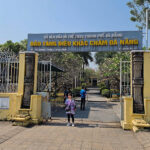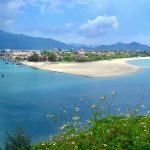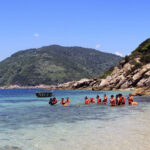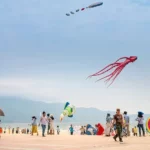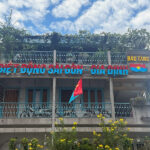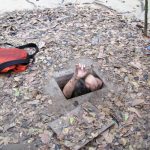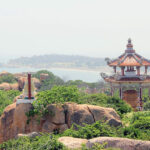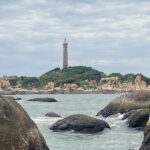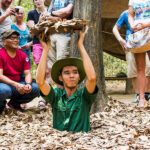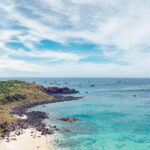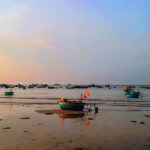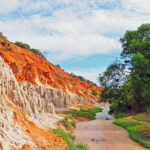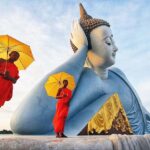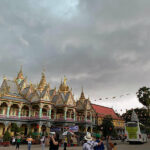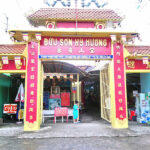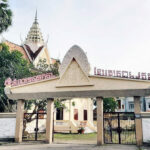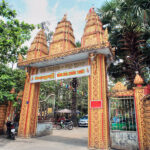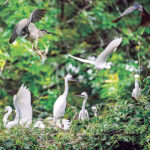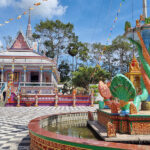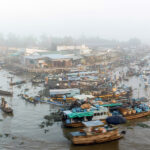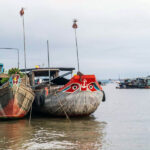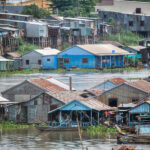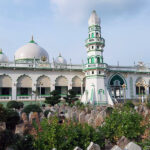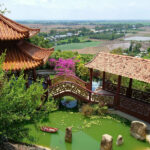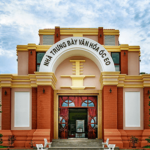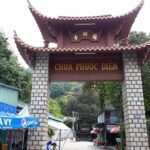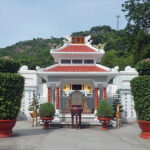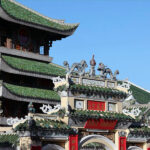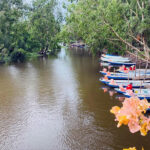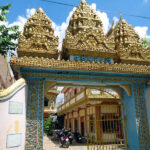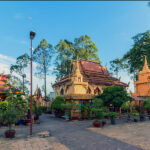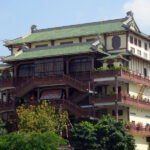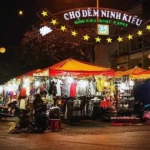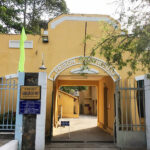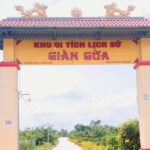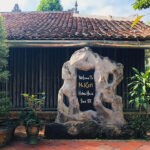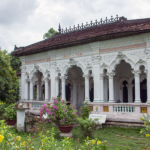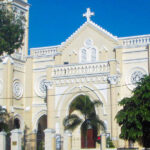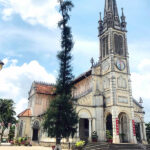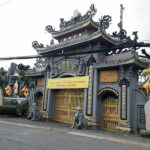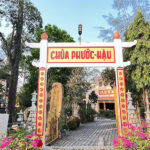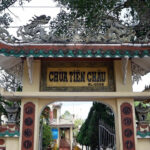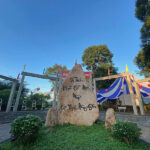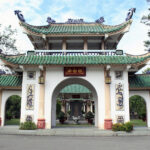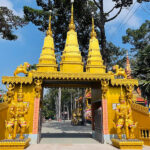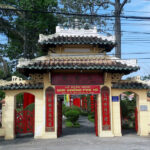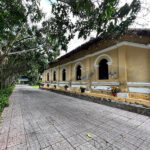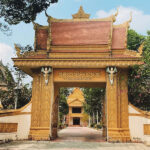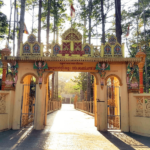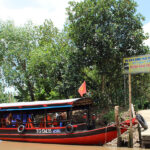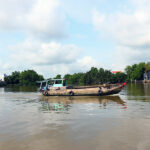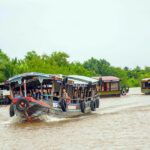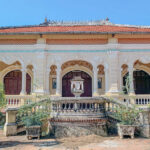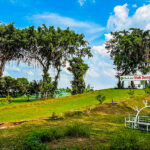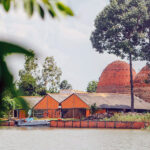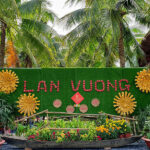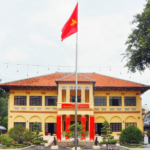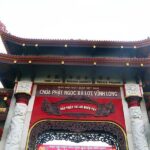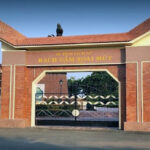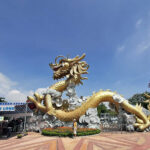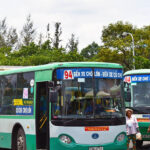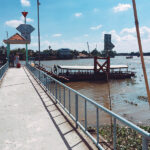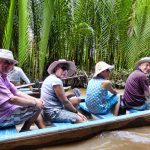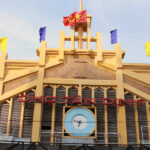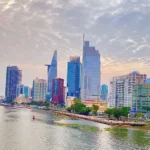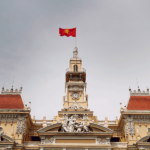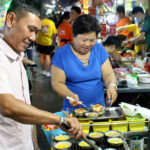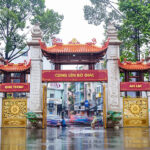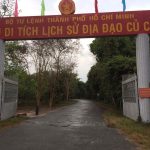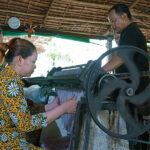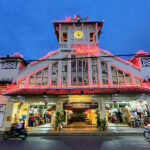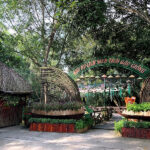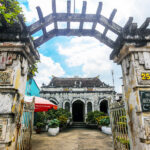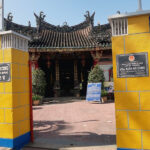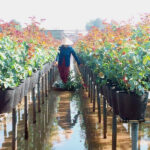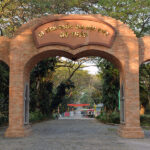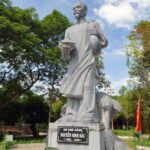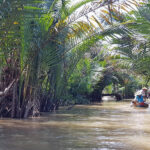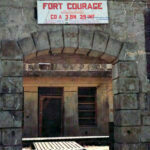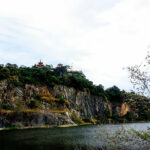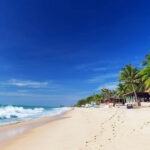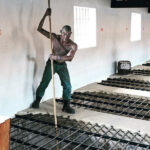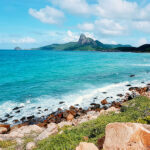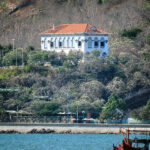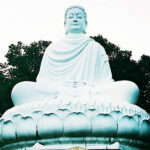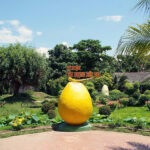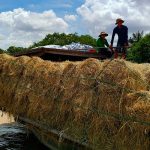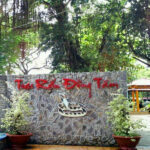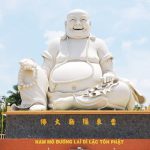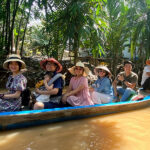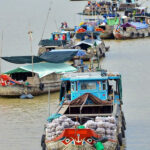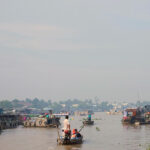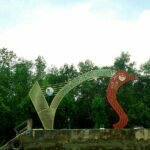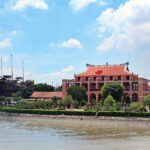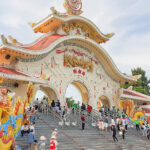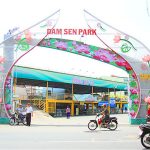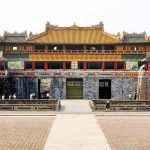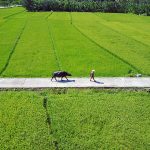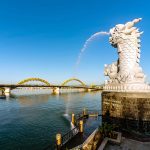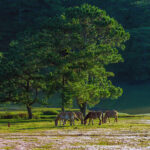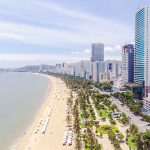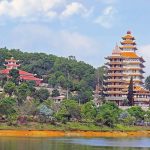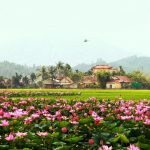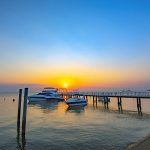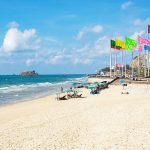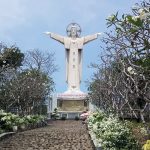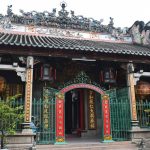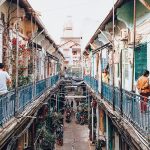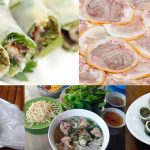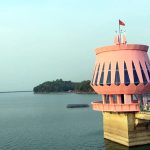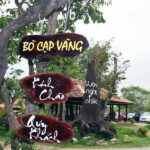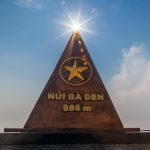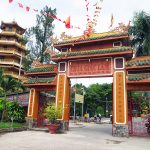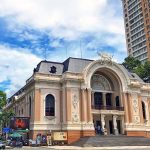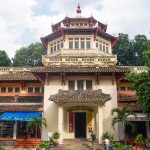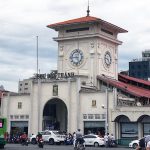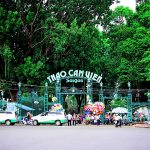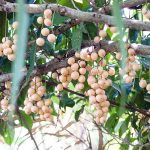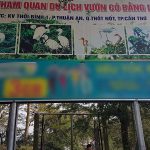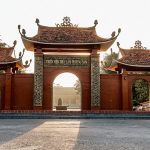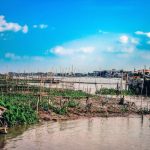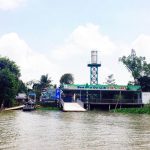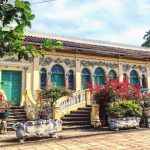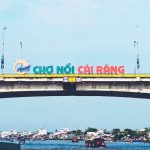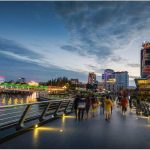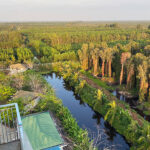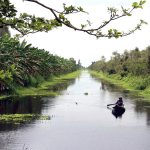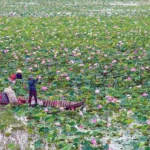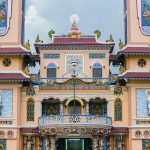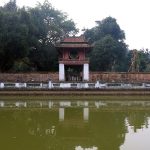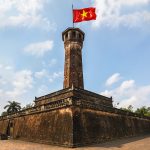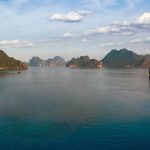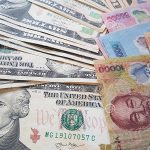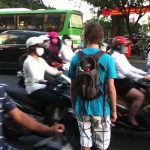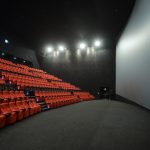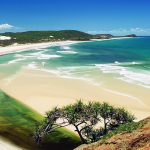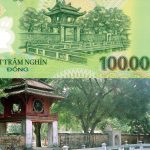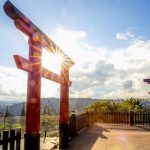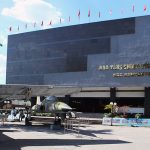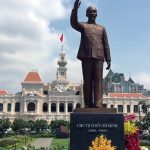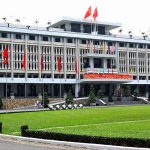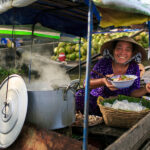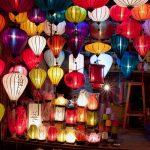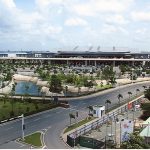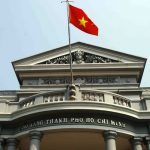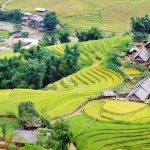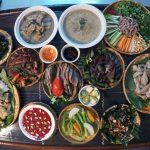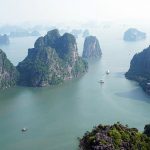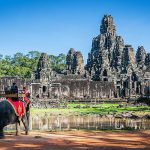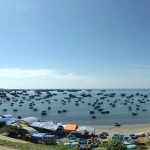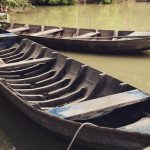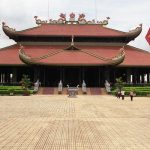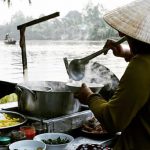Hai Phong is a large port located near a major international maritime line. For hundreds of years, the Chinese, Japanese, French, Spanish and Portuguese have been coming here for trade. Nowadays, it is still a centre for trade as well as industrial city, an important transportation hub, and a famous tourist destination. Let’s explore Hai Phong with Vietdreamtravel on this post.
Table of Contents
General information about Hai Phong
Hai Phong is also known as the Port City. After merging provinces and cities of Vietnam 2025 (Hai Duong province merged to Hai Phong City), the new Hai Phong has an area of 3,194.72 km². The widespread planting of red phoenix flowers in here, and the characteristic color of the flowers on the streets, also makes Hai Phong known as the “Red Phoenix Flower City”.
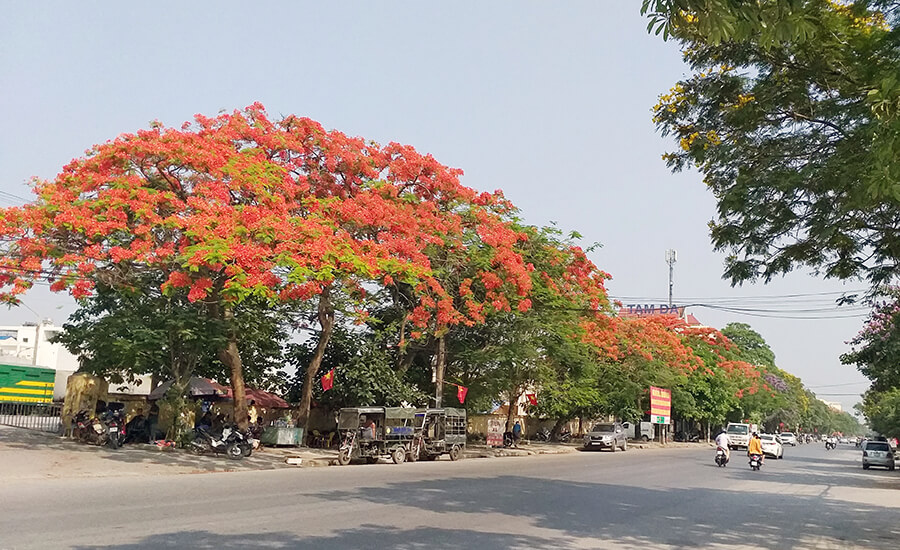
Not only an industrial port city, Hai Phong is also one of the places with great tourism potential. Hai Phong currently retains many attractive architectural features, including traditional architecture with ancient pagodas, temples, shrines and French neoclassical architecture located in the old neighborhoods. At the same time, Hai Phong currently owns a world biosphere reserve, located in the Cat Ba Archipelago, along with beaches and resorts in Do Son. The city also has cultural characteristics, especially cuisine and traditional festivals.
When is the best time to explore Hai Phong?
Hai Phong is suitable for tourism in all four seasons of the year. It has average temperature of 23 – 24C. When visiting Hai Phong in the spring, visitors can attend festivals and visit important historical remains.
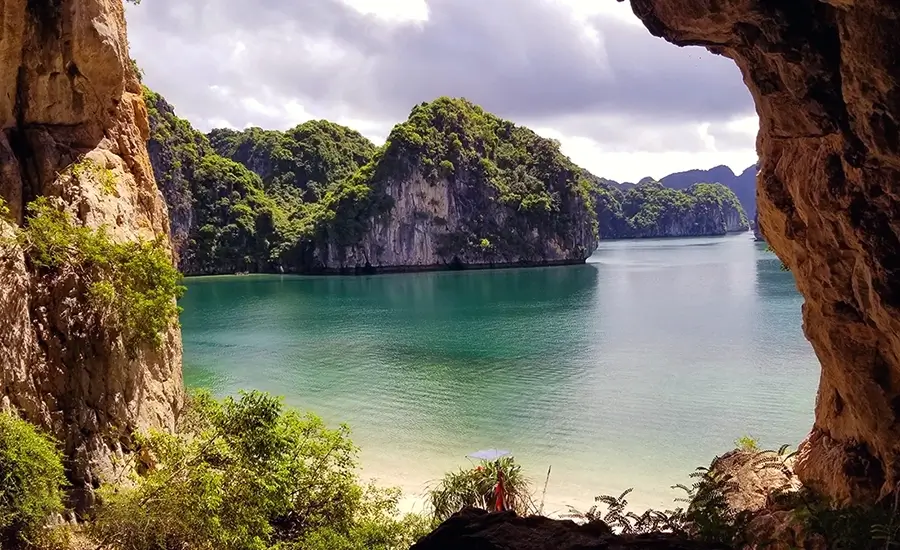
A view at Cat Ba island.
In the summer, Cat Ba Island, Bai Tu Long Bay, and Ha Long Bay are popular destination. Visitors can go to the beach or enjoy the famous coconut ice cream at restaurants in the city. In addition, summer is also the time when red poinciana flowers bloom on the central streets and the road to Do Son.
In autumn, the famous Do Son buffalo-fighting festival is a major attraction.
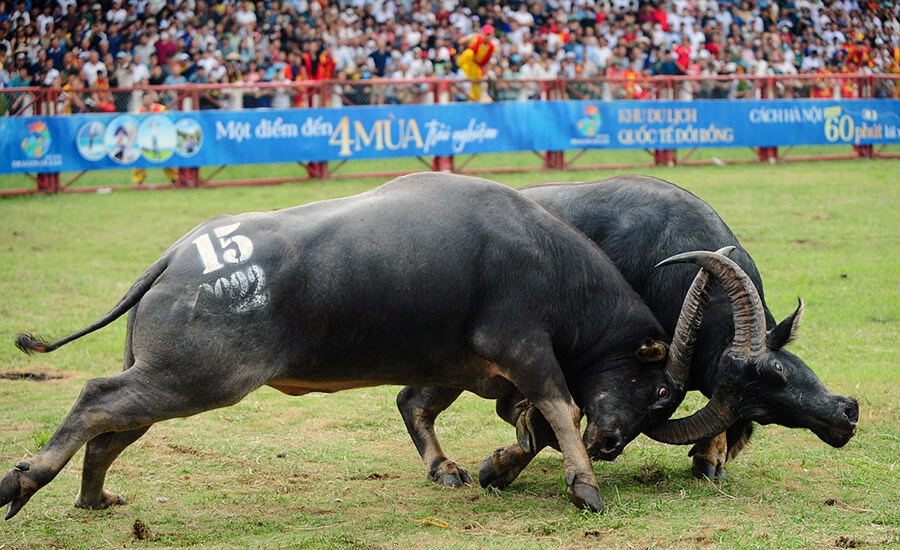
How to get here?
From Hanoi, you can get to Hai Phong by many means.
By road
This is the most convenient way to travel, via the Hanoi – Hai Phong expressway. Time is about 1.5 hours. The road is only for cars. Other vehicles travel along the old QL5. By bus, you can choose Hai Phong Travel, Hoang Phuong which priced at 230,000-250,000 VND include pick-up and drop-off service within the city.
Limousine, with 9 to 11 seats, is the most popular, with fares starting at 230,000 VND/person, with pick-up service at home. Other standard tourist buses from Hoang Long, Hai Au, Hoang Phuong, Hai Phong Travel, Cat Ba Limousine, Hai Nguyen cost from 180,000 VND/person.
By train
Trains are also a popular means of transport, especially for tourists going on food tours during the day. Train pairs HP1/2, LP5/6 and LP7/8 run daily, departing at 6am, 9am, 3pm and 6pm from Long Bien and Hai Phong stations. Tourists can also get off the train at Phu Thai, Hai Duong and Cam Giang stations.
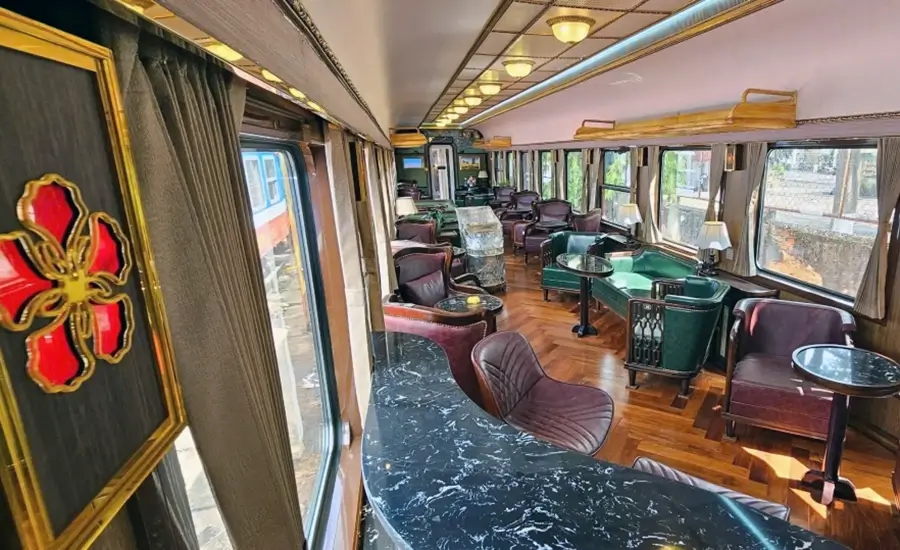
Inside the canteen of a train Hai Phong – Ha Noi.
Trains have hard, soft, air-conditioned or special seats, priced from 120,000 to 300,000 VND. Tourists traveling by train can park their motorbikes to proactively choose their own means of transport in Hai Phong.
By airplane
Hai Phong has Cat Bi airport, located about 12 km from the city center. Vietjet Air and Vietnam Airlines have daily flights from Ho Chi Minh City to Hai Phong. Round-trip fares start at 2 million VND.
Accommodation in Hai Phong
There are many accommodation options in the center of Hai Phong city such as hotels from budget to luxury, homestays, serviced apartments…
Hai Phong has the tourist island of Cat Ba, with famous resorts such as Flamingo Cat Ba Beach Resort, Hôtel Perle d’Orient Cat Ba – MGallery, Nam Cat Island Resort CatbaBay, with average prices from 1.5 million VND per night. Staying overnight on a cruise in Lan Ha Bay is also an option, from 3 to 6 million VND per person per night.
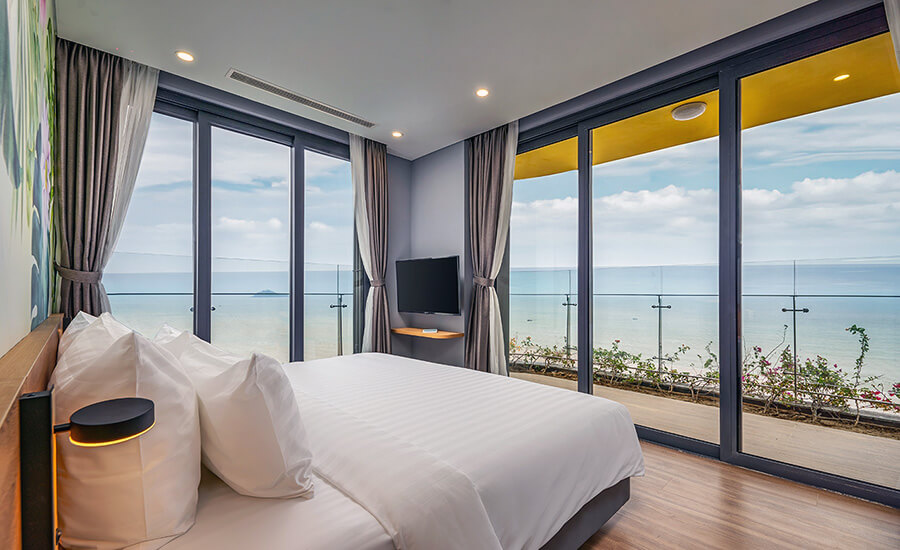
A view from Flamingo Cat Ba resort.
In the areas of Hong Bang, Ngo Quyen, Le Chan wards…, visitors can choose high-end hotels with prime locations, convenient for travel such as Sheraton Hai Phong, Melia Vinpearl Hai Phong Rivera, Pullman Hai Phong Grand Hotel, Mercure Hai Phong, Nikko Hai Phong. Room rates range from 2 million VND per night.
More affordable options are rooms in Vinhomes and Hoang Huy townhouses or homestays Dreamland – Chihouse, Vancao Green Homestay with prices from 300,000 VND per night.
In Do Son and Nam Do Son wards, the most high-end resort is Dream Dragon Resort, with prices from 2.5 million VND per night. Hon Dau Resort, Do Son resort, Ruby Tree Golf villa, Ocean Senses Hotel, Hai Anh Hotel… have prices around 1 million VND per night. Hotels from 300,000 VND to 700,000 VND include Hai Au Hotel, Hai Quan Guesthouse, BIDV Hotel Do Son…
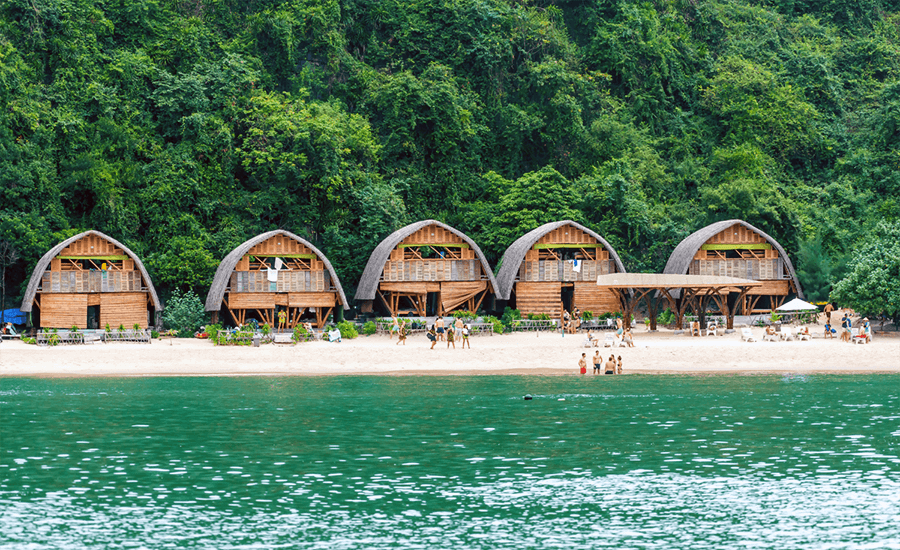
Bungalow in Hai Phong.
In Hai Duong ward, high-end hotels include Nam Cuong, Sen Tim, Kim Bao, Apec Mandala Wyndham Hai Duong, Hai Duong Garden Apartment… with prices around 1 million VND. Budget hotels range from 200,000 VND to 500,000 VND.
Tourist attractions in Hai Phong
Since the addition of the old Hai Duong province, Hai Phong has become not only a famous destination for its pristine beaches and culinary paradise, but also a festival destination, with many temples and historical relics.
Scenic spots
Do Son tourist area
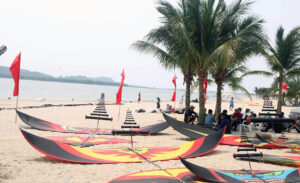 Do Son is divided into 3 areas, of which area 2 is for swimming, area 1 is for eating and walking. Along the coastal road, visitors can visit Hang Pagoda, which is said to be the first place where Buddhism was introduced to Vietnam; Ngoc Hoang Temple; Van Ngang Temple. Thap Tuong Long Pagoda is located on the highest mountain in Do Son, from here you can see the whole beautiful sea. Ba De Temple on the way to Do Son is also very famous, worshiping Trinh Lord’s wife.
Do Son is divided into 3 areas, of which area 2 is for swimming, area 1 is for eating and walking. Along the coastal road, visitors can visit Hang Pagoda, which is said to be the first place where Buddhism was introduced to Vietnam; Ngoc Hoang Temple; Van Ngang Temple. Thap Tuong Long Pagoda is located on the highest mountain in Do Son, from here you can see the whole beautiful sea. Ba De Temple on the way to Do Son is also very famous, worshiping Trinh Lord’s wife.
Do Son has entertainment and sightseeing areas such as Dragon Hill, Hon Dau and casino. Looking from the map, Dragon Hill tourist area is designed in the shape of a royal poinciana flower – the symbol of the city. The project includes a Son Tinh – Thuy Tinh themed entertainment complex of nearly 25 hectares; golf course complex with a full view of the sea; a Lagoon lake system filtered by modern water filtration technology; fine white sand transported from Nha Trang.
Cat Ba Island & National Park
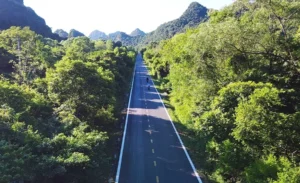 Cat Ba is an archipelago covering approximately 366 islands of different shapes and sizes. The main island is Cat Ba, located 30 nautical miles from Hai Phong, with an area approximately 200km².
Cat Ba is an archipelago covering approximately 366 islands of different shapes and sizes. The main island is Cat Ba, located 30 nautical miles from Hai Phong, with an area approximately 200km².
The topography of the park mainly consists of limestone mountains with many grottoes and caves as well as beaches with white powdery sand. The limestone mountains have an average height of 150m, the highest of which is Cao Vong Peak, 322m above the sea level.
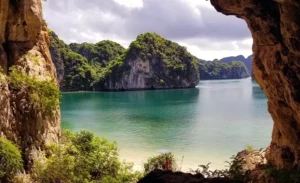 Cat Ba National Park has the largest area of tropical virgin forest in Vietnam. According to research, there are 620 species of plants, 438 lines of descent, and 123 families, among which there are 350 medicinal plants. More than 32 species of mammals, 69 species of birds as well as 20 species of reptiles and amphibians can be found in Cat Ba National Park. The White-headed Vooc, an endangered bird species is found on the cliffs separating the island from the sea. The yellow monkey, the chamois, and many beautiful brids also live on the island.
Cat Ba National Park has the largest area of tropical virgin forest in Vietnam. According to research, there are 620 species of plants, 438 lines of descent, and 123 families, among which there are 350 medicinal plants. More than 32 species of mammals, 69 species of birds as well as 20 species of reptiles and amphibians can be found in Cat Ba National Park. The White-headed Vooc, an endangered bird species is found on the cliffs separating the island from the sea. The yellow monkey, the chamois, and many beautiful brids also live on the island.
.Along with that is the sea area with near-shore coral reefs, cave systems, valleys… In 2004, Cat Ba archipelago was recognized by UNESCO as a world biosphere reserve.
Voi (Elephant) Mountain
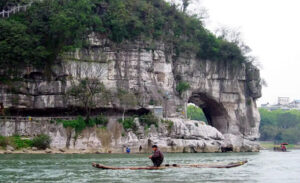 Voi Mountain is 20km south west of the centre of Hai Phong, by the side of Lach Tray River, is the side of a widely diverse natural landscape. It is the highest peak to the north of Kien An.
Voi Mountain is 20km south west of the centre of Hai Phong, by the side of Lach Tray River, is the side of a widely diverse natural landscape. It is the highest peak to the north of Kien An.
At Voi Mountain, visitors can visit many beautiful caves such as Voi Cave, Chieng Cave, Be Cave, and Ca Chep. In the cave, there are many stalactites of various shapes, looking like kneeling dragons, tigers and the head of elephant.
On the top of the mountain, there is an even flat area which is called the “Fairy Chess Board”. There are also ruins of pagodas and citadels from the 16th century Mac Dynasty on the mountain. Of particular note are the remains of the ancient Vietnam civilisation such as stone axes and chisels which date back over 3000 years.
Trang Kenh Landscape
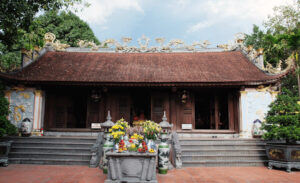 Trang Kenh is a poetic, natural area of hills, limestone mountains, caves and rivers in Bach Dang ward, 20km north-east of Hai Phong.
Trang Kenh is a poetic, natural area of hills, limestone mountains, caves and rivers in Bach Dang ward, 20km north-east of Hai Phong.
U Bo is the name of one famous mountain peak. A myth tells that this mountain is from where Tran Hung Dao commanded the naval battle against the Chinese Nguyen-Mong aggressors in the 13th century. On U Bo Peak, visitors can view the entire panorama of the Bach Dang River. The silence of the river, the immensity of the sea and the existence of mythical stories, all make this a fascinating area.
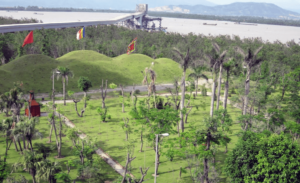 Archaeologist have concluded through investigation that Trang Kenh was a jewellery workshop of the ancient people who lived here 4000 years ago. In more recent times, it was a revolutionary base of Hai Phong civil and military forces during the resistance struggle against the French.
Archaeologist have concluded through investigation that Trang Kenh was a jewellery workshop of the ancient people who lived here 4000 years ago. In more recent times, it was a revolutionary base of Hai Phong civil and military forces during the resistance struggle against the French.
Around Trang Kenh, there are some strange caves include Hang Vua (King’s Cave). It is thus called due to a myth that Hung King the Eighteenth established a separate palace here. The altar of Hung King in the centre of the cave, is a lively-looking stone carved statue of him. There are many small tunnels criss-crossing the 18m high cave and fresh water streams running through it.
An Phu – Kinh Chu – Nham Duong Complex
 An Phu – Kinh Chu – Nham Duong Complex is a historical relic and special national scenic spot in Hai Phong. The relic includes An Phu: including An Phu Temple and Tuong Van Pagoda (Cao Pagoda); Kinh Chu: Kinh Chu Cave in Kinh Chu Mountain, with a cave leading to the sky called Duong Nham; Nham Duong: Nham Duong Pagoda.
An Phu – Kinh Chu – Nham Duong Complex is a historical relic and special national scenic spot in Hai Phong. The relic includes An Phu: including An Phu Temple and Tuong Van Pagoda (Cao Pagoda); Kinh Chu: Kinh Chu Cave in Kinh Chu Mountain, with a cave leading to the sky called Duong Nham; Nham Duong: Nham Duong Pagoda.
An Phu Temple is also known as Cao Temple. The temple is located on the highest mountain peak of An Phu range. According to legend, the temple was built during the Tran Dynasty (13th century), worshiping Tran Lieu – the father of Tran Hung Dao, a Vietnamese national hero. The temple was built in the architectural style of the first and the second, including the front altar, the middle altar and the rear palace. The harem worships the statues of Tran Lieu and his family members.
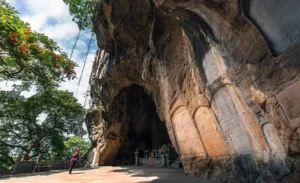 Kinh Chu Cave has many nooks and crannies, in the middle is the Buddha altar, on the right is the altar of Emperor Ly Than Tong and Ly Chieu Hoang, inside is the altar of Duc Thanh Hien and Ban Co. On the left of the cave is the altar of Thanh Hoang and Duc Ong. Deeper inside is the statue of the Third Patriarch of Truc Lam zen sect Huyen Quang.
Kinh Chu Cave has many nooks and crannies, in the middle is the Buddha altar, on the right is the altar of Emperor Ly Than Tong and Ly Chieu Hoang, inside is the altar of Duc Thanh Hien and Ban Co. On the left of the cave is the altar of Thanh Hoang and Duc Ong. Deeper inside is the statue of the Third Patriarch of Truc Lam zen sect Huyen Quang.
Currently, in the cave there are a total of 47 stelae like a museum of stelae with talented carvings, clearly reflecting the contemporary decorative art style from the Tran, Le So, Mac, Le Trung Hung to the Nguyen Dynasty in the 19th century.
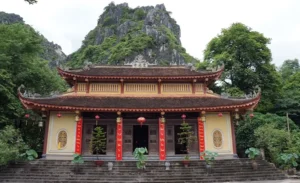 Nham Duong Pagoda, whose Chinese name is Thanh Quang Tu, is a large pagoda, built in the Tran Dynasty, restored and quite bustling in the Le and Nguyen Dynasties. The pagoda also preserves 2 stone towers from the Le Dynasty – precious treasures showing the history of the pagoda.
Nham Duong Pagoda, whose Chinese name is Thanh Quang Tu, is a large pagoda, built in the Tran Dynasty, restored and quite bustling in the Le and Nguyen Dynasties. The pagoda also preserves 2 stone towers from the Le Dynasty – precious treasures showing the history of the pagoda.
Nham Duong Pagoda also has archaeological sites such as Thanh Hoa Cave and Dark Cave, with 1,796 artifacts – mainly fossils of animals dating from 30,000 to 50,000 years old.
Sacred temples and pagodas
Du Hang Pagoda
Du Hang pagoda, named by scholar Phu Lam Tu, is located in Ho Nam ward in Le Chan ward, 2km south-west of the centre of Hai Phong. The pagoda was built during the Early Le Dynasty (980 – 1009).
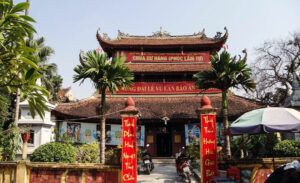 Emperor Tran Nhan Tong, a devout Buddhist, used to preach at the pagoda. The pagoda has gone prepare and restoration on several occasions and is now listed as a historical site containing many relics, including Buddha statues, bronze urns, bells, gongs, and the prayer book of Trang A Ham, an ancient Buddhist script.
Emperor Tran Nhan Tong, a devout Buddhist, used to preach at the pagoda. The pagoda has gone prepare and restoration on several occasions and is now listed as a historical site containing many relics, including Buddha statues, bronze urns, bells, gongs, and the prayer book of Trang A Ham, an ancient Buddhist script.
In addition, the inside of the Buddha hall is decorated with many puzzles, horizontal lacquered boards, and brilliant gold leaf… The space of this temple evokes a unique artistic style that impresses visitors at first sight.
Outside, many airy green trees are planted, creating a relaxing and peaceful atmosphere in the sacred place.
Hang Kenh Communal House
Located on Hang Kenh Street, Hang Kenh Communal House was built in 1717 and expanded in 1905, on a campus of about 6,000 square meters.
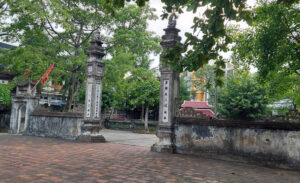 It is famous for its valuable wooden sculptures of which there are 156 pieces with a dragon as the main theme. Altogether, there are 308 dragons of different shapes and sizes. In addition, the communal house preserves two living turtle statues, dating from the late 17th century and early 18th century; many sacred swords and dragon knives listed as antiques, typically a pair of precious swords dating from around the 17th century; a pair of elephant and horse statues dating from around the 19th century, both carved from wood standing on carts, placed in the central room….
It is famous for its valuable wooden sculptures of which there are 156 pieces with a dragon as the main theme. Altogether, there are 308 dragons of different shapes and sizes. In addition, the communal house preserves two living turtle statues, dating from the late 17th century and early 18th century; many sacred swords and dragon knives listed as antiques, typically a pair of precious swords dating from around the 17th century; a pair of elephant and horse statues dating from around the 19th century, both carved from wood standing on carts, placed in the central room….
The Communal House worships the “Restored National Founder” Ngo Quyen, who defeated the Southern Han army on the Bach Dang River in 938, opening a long-lasting era of independence and autonomy for the Vietnamese people.
Every year from the 16th to 18th of the 2nd lunar month, ritual ceremonies, festivals, traditional games and performances of folk songs are held at the communal house, attracting large crowds.
Duoi Temple
Duoi Temple, also known as Quynh Hoa Temple, is located in Cam Cau village, Thong Nhat commune. This is an ancient temple built during the Ly Dynasty (11th century). In 1991, Duoi Temple was ranked as a national relic.
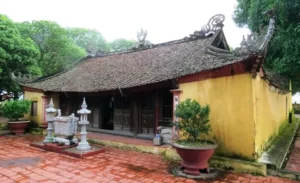 The temple worships Empress Dowager Y Lan (March 7, 1044 – July 25, 1117), concubine of Emperor Ly Thanh Tong, biological mother of Emperor Ly Nhan Tong. During the war, Duoi Temple was a local revolutionary base, a communication center connecting with the Viet Bac resistance base.
The temple worships Empress Dowager Y Lan (March 7, 1044 – July 25, 1117), concubine of Emperor Ly Thanh Tong, biological mother of Emperor Ly Nhan Tong. During the war, Duoi Temple was a local revolutionary base, a communication center connecting with the Viet Bac resistance base.
The current architecture of Duoi Temple was shaped after the restoration at the end of the 17th century. In general, the temple has a layout in the shape of the letter “国”. From front to back, the first structure is the Tien Te building consisting of 3 compartments, 2 wings, 17 meters long, 8.1 meters wide, with 4 main rafters and 2 rows of columns of 2 compartments. This is a typical construction of the Later Le Dynasty with a system of low columns and sophisticated carvings.
Every year, on the 12th day of the 2nd lunar month, which is Empress Dowager Y Lan’s birthday; and on the 25th day of the 7th lunar month, which is her death anniversary, the local people organize a festival to recall her merits and career. Her statue is carried on a palanquin around the commune for everyone to admire and deeply remember the person who contributed to the nation.
Thanh Mai Pagoda
 Thanh Mai Pagoda is located in Nguyen Trai ward. The pagoda was built on the slope of Phat Tich Mountain, now called Tam Bao Mountain. In front of the pagoda is Bai Vong Mountain, where there is the tomb of Nguyen Phi Khanh, father of national hero and world cultural celebrity Nguyen Trai.
Thanh Mai Pagoda is located in Nguyen Trai ward. The pagoda was built on the slope of Phat Tich Mountain, now called Tam Bao Mountain. In front of the pagoda is Bai Vong Mountain, where there is the tomb of Nguyen Phi Khanh, father of national hero and world cultural celebrity Nguyen Trai.
The pagoda was built in the 13th century. This is one of the centers of Vietnamese Buddhism, where the abbot Phap Loa – the second Patriarch of the Truc Lam Zen sect – presided. After years of rain and sun, war, the ancient pagoda collapsed. Recently, the pagoda has been partially restored on the foundations of several large works. The pagoda is located under a maple forest complex spread over an area of over 100 hectares, of which more than 50 hectares are entirely within the pagoda’s land.
Typical architectural works
Hai Phong Station
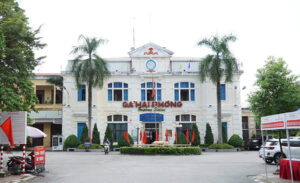 Hai Phong Station is the main train station in Hai Phong City. This is also the last passenger station on the Hanoi – Hai Phong railway line. In addition, Hai Phong Station also has a railway line running to Hai Phong port to transport goods from the port to other areas. Hai Phong Station was built by the French and put into use in 1902.
Hai Phong Station is the main train station in Hai Phong City. This is also the last passenger station on the Hanoi – Hai Phong railway line. In addition, Hai Phong Station also has a railway line running to Hai Phong port to transport goods from the port to other areas. Hai Phong Station was built by the French and put into use in 1902.
This is one of the four main stations on the 99 km long railway line connecting Hai Phong with Hanoi. Hai Phong Station bears the strong architectural imprint of the French. This is also considered one of the most beautiful train stations left by the French in Vietnam. In addition to the main building which is almost completely preserved, Hai Phong Station also retains the iron pillars supporting the porch inside the station and the blue stone foundation from the time of construction.
Hai Phong City Theater
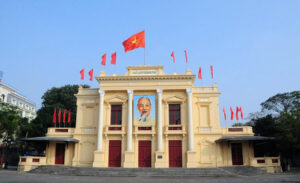 The Hai Phong City Theater was built in 1904 on the site of an old market in the ancient village of An Bien and completed in 1912. This project was modeled after the Paris Theater, with construction materials brought from France, and the construction was carried out by Vietnamese workers and laborers under the direction of a French architect.
The Hai Phong City Theater was built in 1904 on the site of an old market in the ancient village of An Bien and completed in 1912. This project was modeled after the Paris Theater, with construction materials brought from France, and the construction was carried out by Vietnamese workers and laborers under the direction of a French architect.
The theater’s architecture also impresses visitors with its elaborate decoration combined with curves. The stage area is not divided into levels but is open from the podium to the ceiling and roof.
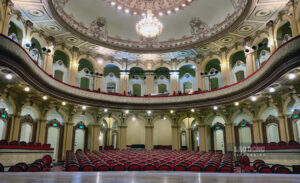 The space above the stage is equipped with an electrical and air conditioning system. The theater’s Roman-style door system leads to the backstage and the dressing rooms, rest rooms and technical rooms.
The space above the stage is equipped with an electrical and air conditioning system. The theater’s Roman-style door system leads to the backstage and the dressing rooms, rest rooms and technical rooms.
During the French colonial period, the Opera House was the political and cultural center of the French and wealthy locals. Only French troupes or famous domestic troupes were allowed to perform here, and only the wealthy could afford tickets. Today, this is a tourist symbol of the city, located in the center, where cultural activities regularly take place and is a meeting place for groups of young people in the evening.
Hai Phong Museum
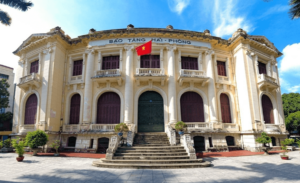 Hai Phong Museum is located at 65 Dien Bien Phu Street, Hong Bang ward. This building was built 1918, in the classical Gothic architecture of Europe with the highlight being the pointed dome.
Hai Phong Museum is located at 65 Dien Bien Phu Street, Hong Bang ward. This building was built 1918, in the classical Gothic architecture of Europe with the highlight being the pointed dome.
The building is about 16 m high (not including the height of the two towers), has two floors, a basement, and a floor area of about 1,200 m². After many renovations, Hai Phong Museum still retains the original exterior architecture and basic interior structure as it was more than 100 years ago.
The two floors of Hai Phong Museum are divided into 16 exhibition rooms with 12 contents and one room for thematic exhibitions to celebrate major holidays of the country and city, as well as related cultural events in the historical process. The museum has more than 22,000 artifacts and is currently displaying 1,736 artifacts, 840 images and documents.
Bao Dai Palace
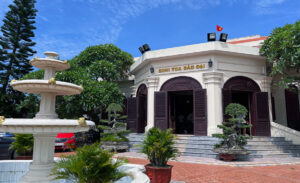 Bao Dai Palace, also known as Bao Dai Tower, is located on Vung Hill, Nam Do Son Ward. The palace is also famous as a resting place for many kings and their families when going to the North. Currently, this place still preserves relics associated with the last king of the feudal dynasty of Vietnam.
Bao Dai Palace, also known as Bao Dai Tower, is located on Vung Hill, Nam Do Son Ward. The palace is also famous as a resting place for many kings and their families when going to the North. Currently, this place still preserves relics associated with the last king of the feudal dynasty of Vietnam.
Bao Dai Palace has French architecture, facing the sea, surrounded by a flower garden with many shady trees, with a basement and two upper floors. The entire palace is located in a campus of more than 3,700 square meters, the private area of the palace is 1,000 square meters, at an altitude of nearly 40 meters above sea level.
Long Chau Lighthouse
 Long Chau archipelago is located 15 km southeast of Cat Ba town, Cat Hai special economic zones. It is famous for Long Chau lighthouse, built in 1894 at 109.5m above sea level. It is a means of lighting for ships to move easily at sea. With a unique arched design. In the middle is a room. It is a combination of flat lampshades with small bulbs, called lamp hearts. On clear days, ships 25nautical mile away from Long Chau island can still see the light from here.
Long Chau archipelago is located 15 km southeast of Cat Ba town, Cat Hai special economic zones. It is famous for Long Chau lighthouse, built in 1894 at 109.5m above sea level. It is a means of lighting for ships to move easily at sea. With a unique arched design. In the middle is a room. It is a combination of flat lampshades with small bulbs, called lamp hearts. On clear days, ships 25nautical mile away from Long Chau island can still see the light from here.
This lighthouse is called “Archipen des Fai Tsi long” or Griffes du Dragon” (means dragon’s claws) by the French. Long Chau lighthouse is also one of the 3 oldest lighthouses in Vietnam along with Hon Dau and Ke Ga lighthouses.
Historical and cultural relics
Bach Dang Giang relic site
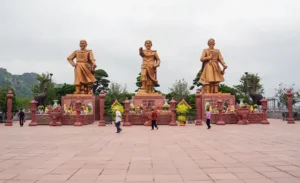 The Bach Dang Giang relic site is 20 hectares wide, located in the Trang Kenh mountain range, recognized in 1962. The entrance to the relic is a pebble garden and a stone pillar about 5m high, all 4 sides are engraved with words, the middle side is engraved with a poem, the remaining 3 sides praise the achievements of the three predecessors in the naval battles.
The Bach Dang Giang relic site is 20 hectares wide, located in the Trang Kenh mountain range, recognized in 1962. The entrance to the relic is a pebble garden and a stone pillar about 5m high, all 4 sides are engraved with words, the middle side is engraved with a poem, the remaining 3 sides praise the achievements of the three predecessors in the naval battles.
The complex has many other areas such as Bach Dang Giang Temple, worshiping King Ngo Quyen, who founded the Bach Dang stake battle, defeated the Southern Han army in 938, ended 1117 years of Chinese domination, and opened the Dai Viet civilization.
Doctoral Laureate Nguyen Binh Khiem relic site
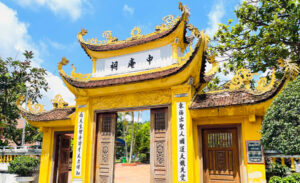 This site is located in Trung Am Hamlet, Nguyen Binh Khiem commune. It has nine separate structures: the Kinh Thien pen-shaped tower, the temple built after his death in 1585 with three front halls and tow back sanctuaries. In front of the temple are two ponds which represent the earth and the sky.
This site is located in Trung Am Hamlet, Nguyen Binh Khiem commune. It has nine separate structures: the Kinh Thien pen-shaped tower, the temple built after his death in 1585 with three front halls and tow back sanctuaries. In front of the temple are two ponds which represent the earth and the sky.
The horizontal lacquered board kept in the temple reads: “An Nam Ly Hoc” (Master of Philosophy in An Nam; the exhibition room with details on Nguyen Binh Khiem’s biography and career; a tomb of his father at the back of the temple; the stone statue of Nguyen Binh Khiem, 5.7m in height and 8.5 tons in weight, the semi-circular pond 1000m² in area; Song Mai Pagoda; the Ancestor Worshipping House with the statue of Minh Nguyet, Nguyen Binh Khiem’s wife and Trung Tan pavilion, whose names gives a new interpretation of the concept “trung” (loyalty); everyone tries to reach “chi trung chi thien” (absolute loyalty and goodness).
Nowadays, the site having been upgraded is a major tourist attraction in the region. It is also where a big festival commemorating Nguyen Binh Khiem as a cultural celebrity are held.
Nghe Temple
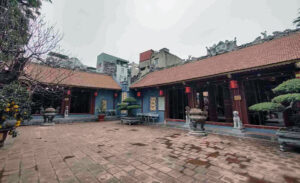 The temple is situated in the centre of Hai Phong, approximately 600 south west of the Municipal Theatre. Nghe temple is devoted to the cult of Le Chan, a female general of Trung Sister’s insurrection in the first century (40 – 43). Le Chan founded An Bien Village which becomes Hai Phong in later.
The temple is situated in the centre of Hai Phong, approximately 600 south west of the Municipal Theatre. Nghe temple is devoted to the cult of Le Chan, a female general of Trung Sister’s insurrection in the first century (40 – 43). Le Chan founded An Bien Village which becomes Hai Phong in later.
Nghe temple contains stone elephants and horses as well stelae. The Nghe Temple is a work with the architectural style of the Nguyen Dynasty, early 20th century, including: three gates, worshiping hall, incense burning, rear palace, martial arts hall, stele house, place for placing stone elephant and stone horse statues.
The architectural works of Nghe Temple form a closed architectural space, following the traditional national style.
Nghe Temple was ranked by the State as a National Historical and Cultural Relic since 1975. Every year, on holidays, especially the birthday and death anniversary of female general Le Chan, the temple regularly organizes special and meaningful festival activities to commemorate the talented female general of Hai Phong.
Con Son – Kiep Bac
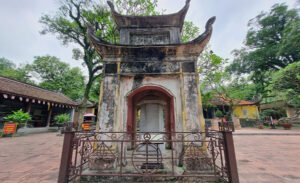 Con Son – Kiep Bac is a historical relic site associated with the heroes and cultural figures Tran Hung Dao and Nguyen Trai. Coming to Con Son, visitors climb Ky Lan Mountain, with Ban Co Tien Peak. On the right side of Ky Lan Mountain, where Nguyen Trai built a house to teach, there are still traces of the old house foundation and a stone slab that locals call Thach Ban, also known as the “five-room” stone (as wide as 5 rooms), where Nguyen Trai used to sit and read books.
Con Son – Kiep Bac is a historical relic site associated with the heroes and cultural figures Tran Hung Dao and Nguyen Trai. Coming to Con Son, visitors climb Ky Lan Mountain, with Ban Co Tien Peak. On the right side of Ky Lan Mountain, where Nguyen Trai built a house to teach, there are still traces of the old house foundation and a stone slab that locals call Thach Ban, also known as the “five-room” stone (as wide as 5 rooms), where Nguyen Trai used to sit and read books.
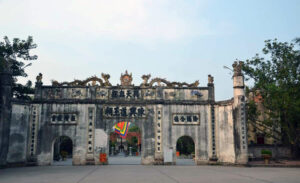
Kiep Bac is located on a flat land in the middle of the Dragon Mountain valley. The three-door gate of Kiep Bac Temple looks like a majestic “Two dragons worshipping the moon” scroll. Kiep Bac Temple overlooks the Thuong River. During the Tran Dynasty, this was Binh Than Wharf.
Taking a boat on Binh Than River, visitors will see a 200m long sandbank, called Con Kiem, where Tran Hung Dao left a precious sword for future generations. Behind Kiep Bac temple is Tran Rong mountain, on the left is Bac Dau mountain, on the right is Nam Tao mountain embracing the majestic Kiep Bac.
Mao Dien Temple of Literature
 Vietnam has the largest and oldest Temple of Literature, the Temple of Literature in Hanoi, the second is Mao Dien Temple of Literature, Mao Diem commune, Hai Phong City. Mao Dien Temple of Literature was established to worship Confucius and great Confucian scholars according to the traditions of Vietnam, China and some other East Asian countries. The Temple of Literature (Hai Duong) is ranked as a special national monument.
Vietnam has the largest and oldest Temple of Literature, the Temple of Literature in Hanoi, the second is Mao Dien Temple of Literature, Mao Diem commune, Hai Phong City. Mao Dien Temple of Literature was established to worship Confucius and great Confucian scholars according to the traditions of Vietnam, China and some other East Asian countries. The Temple of Literature (Hai Duong) is ranked as a special national monument.
The relic was established more than 500 years ago, during the early Le Dynasty. Mao Dien is the name of the locality, Mao means grass; Dien means field. In the past, this place was a very large field with lots of fragrant grass, chosen as the Huong examination school of Hai Duong town. During the Tay Son Dynasty, the Temple of Literature was moved from Vinh Lai to merge with the Huong examination school. Since then, the relic has been called Mao Dien Temple of Literature.
Giam Pagoda
The national historical site of Giam Pagoda, located in Dinh Son Commune, has the Cuu Pham Lien Hoa Tower. The pagoda was built in 1336, worshiping the great physician Tue Tinh.
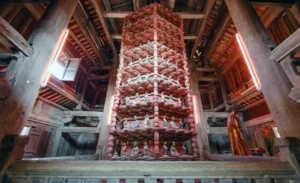 The Cuu Pham Lien Hoa tower is painted in red and gilded with patterns of high aesthetic value. On the lotus floors there are 144 statues on 54 lotus petals, the top floor has a statue of Amitabha. The Cuu Pham Lien Hoa tower still retains its original ancient architecture and is one of three Cuu Pham Lien Hoa (But Thap Pagoda, Dong Ngo Pagoda) with special value in sculpture and decoration in our country.
The Cuu Pham Lien Hoa tower is painted in red and gilded with patterns of high aesthetic value. On the lotus floors there are 144 statues on 54 lotus petals, the top floor has a statue of Amitabha. The Cuu Pham Lien Hoa tower still retains its original ancient architecture and is one of three Cuu Pham Lien Hoa (But Thap Pagoda, Dong Ngo Pagoda) with special value in sculpture and decoration in our country.
The hexagonal prism-shaped tower is the most prominent structure of Giam Pagoda, made from ironwood, about 8 m high, weighing 4 tons with many elaborate carvings. In the middle of the tower is a rotating shaft that allows the entire structure to rotate with the push of one person. In 2016, Cuu Pham Lien Hoa of Giam Pagoda was recognized as a national treasure.
Nature and wildlife areas
Chi Lang Nam Stork Island
 The stork island is located in Nam Thanh Mien commune, covering an area of over 31,000 hectares, and is home to about 12,000 storks and 5,030 herons. The main species include white, black, fiery stocks, herons and egrets. In addition, there are night herons and precious species of birds such as pelican, teal also reside in this island….
The stork island is located in Nam Thanh Mien commune, covering an area of over 31,000 hectares, and is home to about 12,000 storks and 5,030 herons. The main species include white, black, fiery stocks, herons and egrets. In addition, there are night herons and precious species of birds such as pelican, teal also reside in this island….
To visit, visitors have two options: pedaling or taking a boat around the small islands. It only takes about a day for visitors to visit the entire island. Many people choose to stay overnight at homestays to enjoy the peaceful scenery and learn about the life of storks. Thanks to that, they can observe more scenes such as flocks of storks and herons flying out to find food in the early morning and returning at dusk.
Traditional craft villages
Chu Dau Pottery Village
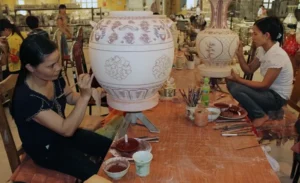 Chu Dau Pottery Village is located in Thai Tan Commune. Chu means boat, Dau means wharf, meaning the boat is moored at the river wharf. Chu Dau was originally a small village on the Thai Binh River, its reputation spread far and wide until traces of the pottery craft appeared, reaching the pinnacle of technique and art, the most famous in the world centuries ago.
Chu Dau Pottery Village is located in Thai Tan Commune. Chu means boat, Dau means wharf, meaning the boat is moored at the river wharf. Chu Dau was originally a small village on the Thai Binh River, its reputation spread far and wide until traces of the pottery craft appeared, reaching the pinnacle of technique and art, the most famous in the world centuries ago.
The most typical products of ancient Chu Dau pottery are the Hoa Lam vase and the Ty Ba vase, also known as the father vase, the mother vase. The Ty Ba vase has the shape of a lute, representing the yin, the mother, the gentle and virtuous Vietnamese woman. The Hoa Lam vase represents the yang, the husband, the father, the pillar of the family.
Dong Giao Wood Carving Village
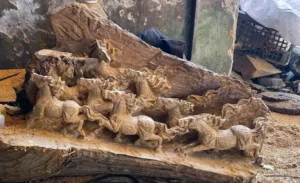 Dong Giao Wood Carving Village is located in Cam Giang commune, 20km west of Hai Duong ward. Dong Giao craftsmen mainly do the sculpting, usually the eight-piece altar, incense table, votive door… then hand over the goods to other villages to be painted, inlaid with mother-of-pearl or gilded. In addition to traditional products, the village also makes statues and decorative items, some of which are exported to China, Korea, Japan and some European countries..
Dong Giao Wood Carving Village is located in Cam Giang commune, 20km west of Hai Duong ward. Dong Giao craftsmen mainly do the sculpting, usually the eight-piece altar, incense table, votive door… then hand over the goods to other villages to be painted, inlaid with mother-of-pearl or gilded. In addition to traditional products, the village also makes statues and decorative items, some of which are exported to China, Korea, Japan and some European countries..
In recent years, many programs to support craft villages have been implemented in the direction of building brands, participating in domestic and international fairs. Dong Giao village is also oriented to develop in association with experiential tourism. Visitors coming here not only visit temples, pagodas, historical sites, but also directly experience the carpentry process, using chisels to carve wood. This is considered a sustainable direction, both creating livelihoods and promoting culture..
Thanh Hai Water Puppetry Village
Hai Phong has 3 remaining puppetry troupes: Hong Phong, Thanh Hai and Le Loi. All of them take advantage of the performance location being interspersed with houses and fields. Thanks to that, visitors have a sense of closeness when watching.
 In a small pond in the middle of the village, a water pavilion was built as a performance venue. The stories of the fields are skillfully evoked by the locals, who are often familiar with plowing and planting. The performances of the four sacred animals dance, the story of the frog fisherman… just happened naturally and were enthusiastically responded by tourists.
In a small pond in the middle of the village, a water pavilion was built as a performance venue. The stories of the fields are skillfully evoked by the locals, who are often familiar with plowing and planting. The performances of the four sacred animals dance, the story of the frog fisherman… just happened naturally and were enthusiastically responded by tourists.
Unlike many other places, the puppetry art here has a different control system. While many other troupes use poles to bring out the puppets and then pull the strings, the people here stick stakes underwater and then connect the strings. At that time, each activity and gesture of the “character” will be controlled by their ingenuity and skill.
Hai Phong cuisine
Hai Phong is most famous for its street food. Tourists often choose a day food tour to enjoy Hai Phong’s delicious dishes. However, if you want to experience and enjoy Hai Phong’s specialties yourself, don’t forget the following dishes.
Crab noodle soup
The basic ingredients of a bowl of crab noodle soup include rice noodles (red rice noodles or white rice noodles) that have been blanched because this ingredient has been steamed before drying, the accompanying filling is a portion of soft, smooth field crab fat, thinly sliced lolot sausage, a few round, plump meatballs, sweet and chewy shrimp, and a little fatty pork fat.
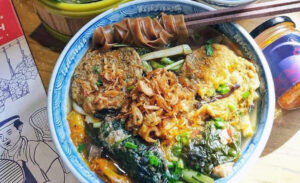 The crab noodle soup is served with seasonal vegetables such as water spinach, water mimosa, mustard greens, chrysanthemum greens, celery… Herbs include green onions, coriander, and Vietnamese coriander…After arranging the ingredients one by one like a work of art, the seller will pour in hot broth made from sweet, flavorful ground crab.
The crab noodle soup is served with seasonal vegetables such as water spinach, water mimosa, mustard greens, chrysanthemum greens, celery… Herbs include green onions, coriander, and Vietnamese coriander…After arranging the ingredients one by one like a work of art, the seller will pour in hot broth made from sweet, flavorful ground crab.
To make the dish more appealing, the seller does not forget to drizzle a little caramel sauce made from crab fat with shiny red fat. Sprinkle some fragrant, golden fried onions on top and diners can start enjoying.
When eating crab noodles, you should definitely add a little bit of chi chuong – a typical chili sauce of Hai Phong to enhance the dish’s distinctive flavor.
Ha Lung cake
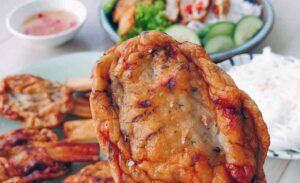 Ha Lung cake (cha chia Ha Lung) are one of the delicious dishes of Hai Phong that makes many diners “miss” them. The unique flavors to create Ha Lung cake are dried squid, sugarcane and lean pork. To choose delicious squid, people are picky about buying squid in Cat Ba, Cat Hai, then bring the squid back, cut it into small pieces, grind it with lean pork, marinate it with fish sauce, MSG, shiitake mushrooms, wood ear mushrooms, pepper… and roll it on a sugarcane stick.
Ha Lung cake (cha chia Ha Lung) are one of the delicious dishes of Hai Phong that makes many diners “miss” them. The unique flavors to create Ha Lung cake are dried squid, sugarcane and lean pork. To choose delicious squid, people are picky about buying squid in Cat Ba, Cat Hai, then bring the squid back, cut it into small pieces, grind it with lean pork, marinate it with fish sauce, MSG, shiitake mushrooms, wood ear mushrooms, pepper… and roll it on a sugarcane stick.
Before eating, the cake is steamed and then deep-fried in oil. Ha Lung cake is served with raw vegetables and chi chuong (the way Hai Phong people call chili sauce). Biting into a piece of the cake, you will feel the sweetness of sugarcane, the rich aroma of meat and especially the rich, authentic taste of the sea from the attractive dried squid pieces.
Green bean cake
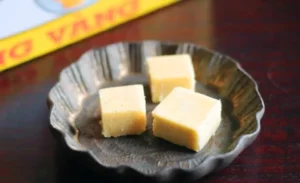 When mentioning Hai Phong, most of the thoughts about delicious gifts are focused on green bean cake. This dish was born in the early 20th century and although it does not have an eye-catching appearance, the delicious flavor of green bean cake still attracts the attention of many travelers. The ingredients to make this dish include green beans, sugar, lard and grapefruit oil.
When mentioning Hai Phong, most of the thoughts about delicious gifts are focused on green bean cake. This dish was born in the early 20th century and although it does not have an eye-catching appearance, the delicious flavor of green bean cake still attracts the attention of many travelers. The ingredients to make this dish include green beans, sugar, lard and grapefruit oil.
Experienced cooks often choose thin green beans, dry them, roast them until golden brown and then grind them into fine powder. The lard is fried over low heat to avoid burning, then filtered and only the transparent part is taken. The sugar is mixed with water, also filtered, and grapefruit essential oil is added, mixed skillfully in the right proportion, to create delicious cakes. Enjoy green bean cake, sip a cup of tea. The bitter and astringent taste will enhance the sweet and rich feeling of the cake.
Gai cake
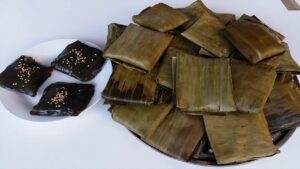 Appearing in Hai Phong since the 12th century, gai cake quickly became famous far and wide and exists to this day. This is a simple cake, made from garden ingredients but still makes diners remember forever. The ingredients of Gai cake are divided into two parts: the shell and the filling. In which, the shell only includes sticky rice and Gai leaves, while the filling has pork fat, green beans, coconut and lotus seeds.
Appearing in Hai Phong since the 12th century, gai cake quickly became famous far and wide and exists to this day. This is a simple cake, made from garden ingredients but still makes diners remember forever. The ingredients of Gai cake are divided into two parts: the shell and the filling. In which, the shell only includes sticky rice and Gai leaves, while the filling has pork fat, green beans, coconut and lotus seeds.
The most elaborate way of processing is the filling. In which, pork fat is marinated with sugar to make it crispy like pumpkin jam. Lotus seeds and green beans are stewed, crushed and mixed with pork fat, fresh coconut, and sugar. Gai cake is wrapped in dry banana leaves, steamed for 2 hours.
Thanh Ha Lychee
 In May and June, all over Hai Phong, especially Thanh Ha land, there are many ripe lychee trees. The clusters of ripe lychee are bright red mixed with the green foliage. Entering the gardens, you will enjoy the fresh air, enjoy picking the ripe lychee clusters with your own hands, feeling the aroma and sweet taste lingering on the tip of your tongue. Thanh Ha lychee’s characteristic is that the ripe skin is bright red, the surface is flat, the lychee pulp is thick, clear white, crispy, has a sweet taste and a light aroma.
In May and June, all over Hai Phong, especially Thanh Ha land, there are many ripe lychee trees. The clusters of ripe lychee are bright red mixed with the green foliage. Entering the gardens, you will enjoy the fresh air, enjoy picking the ripe lychee clusters with your own hands, feeling the aroma and sweet taste lingering on the tip of your tongue. Thanh Ha lychee’s characteristic is that the ripe skin is bright red, the surface is flat, the lychee pulp is thick, clear white, crispy, has a sweet taste and a light aroma.
Rice paper
The characteristic of Hai Phong is that the rice paper is soft, chewy, and does not break when soaked in water for a long time. To have such rice paper, the locals here revealed that they only use Q5 rice. Customers who buy this specialty can process it into many delicious dishes such as stir-fried pork, cooked with fish, chicken…
Ruoi cake
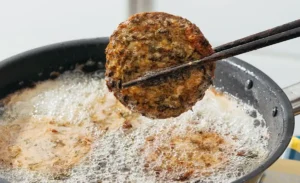 Ruoi, scientifically named Nereididae, are a family of polychaete worms. Ruoi cakes are found in the low-lying rice fields of Kinh Mon, Kim Thanh, Thanh Ha, and Tu Ky. Every “September 20th and October 5th” when the tide rises and floods the fields, Ruoi cakes emerge from underground in groups and swim out to the river.
Ruoi, scientifically named Nereididae, are a family of polychaete worms. Ruoi cakes are found in the low-lying rice fields of Kinh Mon, Kim Thanh, Thanh Ha, and Tu Ky. Every “September 20th and October 5th” when the tide rises and floods the fields, Ruoi cakes emerge from underground in groups and swim out to the river.
Wash the Ruoi cakes, drain them, then put them in a bowl and use chopsticks to mash them and mix them with the above ingredients. Use a steamer to cook the Ruoi cakes, then put them in a pan of oil and fry them into patties. Hot Ruoi cakes are rolled in lettuce leaves and eaten with herbs and vermicelli noodles, then dipped in fish sauce to feel the rich taste.
Source: collected by An
Follow us for the best deal with Vietnam package tours and visa services!
